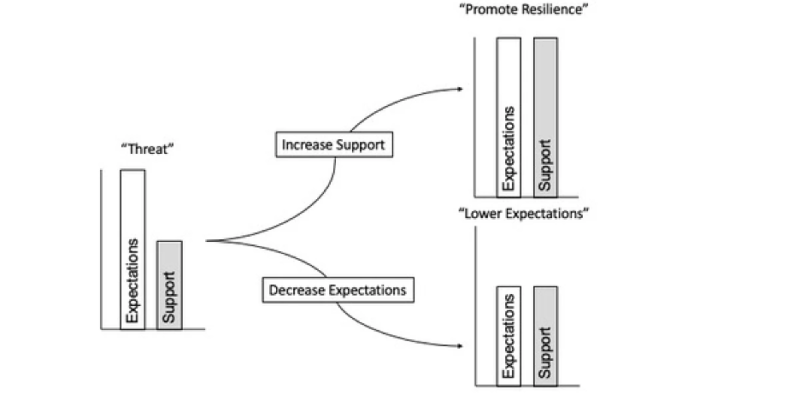This is part of a series called, Ask a Psychologist at Education Week
September 30, 2020 – David Yeager
This piece was originally published at characterlab.org in December 2019, but it’s still relevant today.
Question: What can I do to help students make the transition into high school?
Starting high school is hard. One 9th grader recently described seeing her old middle school friends walk by her in the hallway “without a hi or a smile.”
“I felt invisible,” she told me. To kids, minor incidents like this can seem like a sign of more bad things to come. As another teen said to me: “It makes me feel like I won’t have any friends at my high school reunion.”
As a scientist, I want to help kids stay optimistic during tough transitions in life. We’ve learned that if kids think that you can’t change the kind of person you are—a “bully” or a “victim,” a “good” person or a “bad” one—then they believe small difficulties predict the rest of their life.
Unfortunately, helping teens deal with stress isn’t as easy as telling them things will get better. What does work is giving teens reasons to hope that people’s underlying character can truly be transformed for the better. We call this a “growth mindset” about personality, and it boils down to a simple message: People can change.
In a series of experiments, we taught teens that labels like “winner” or “loser” are false and don’t define you. As a result, the students were less stressed if they got excluded, were better able to pay attention in school and got better grades, and were less likely to be depressed at the end of the year. (If you have an 8th or 9th grader, they can try out this online activity, which is available for beta testing.)
Don’t try to comfort stressed-out kids with platitudes (“Don’t worry, you’ll be fine”) or labeling kids in ways that imply they will never change (such as, “They’re just bullies” or “You’re a good person, and they aren’t”).
Do help kids see that even though it might take a long time, people can change for the better. And rather than telling them what to think, ask them to explain to you (or their friends) why this conception of personality could be true. Honoring their perspectives makes them more likely to hold on to the growth-mindset message.


